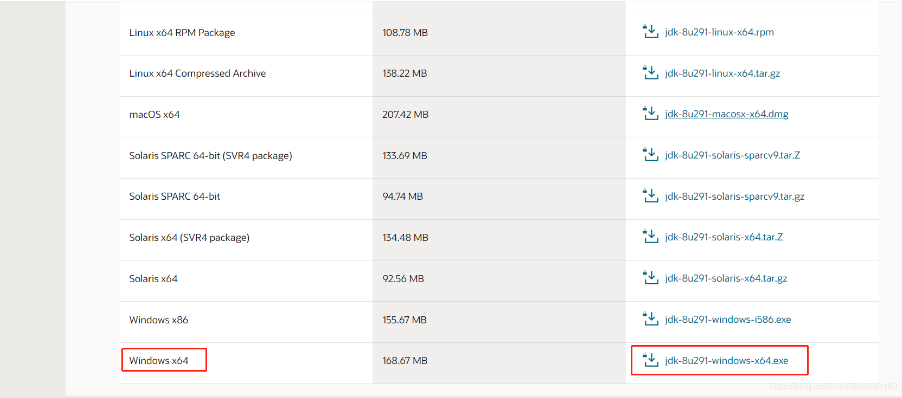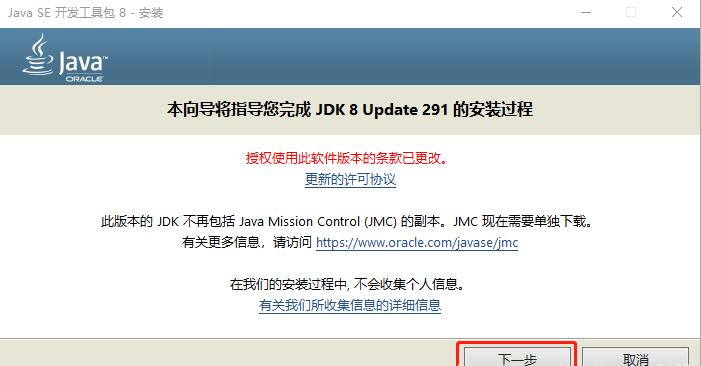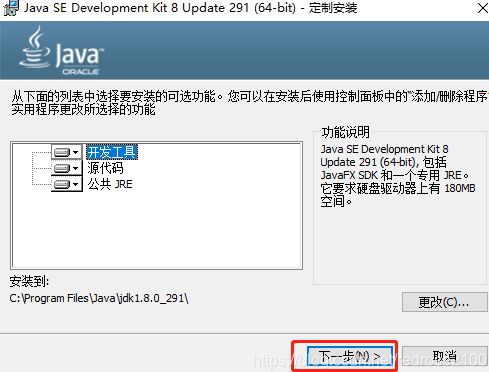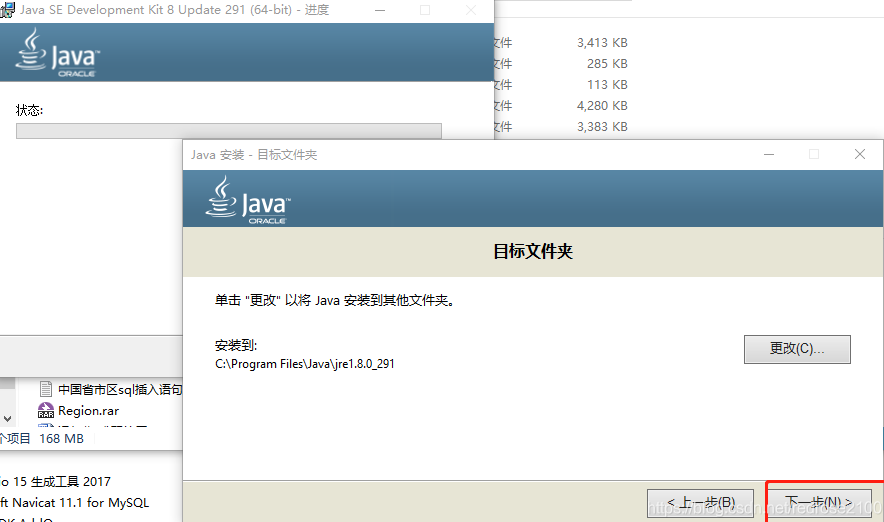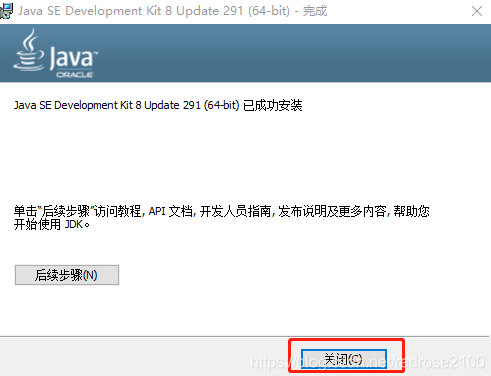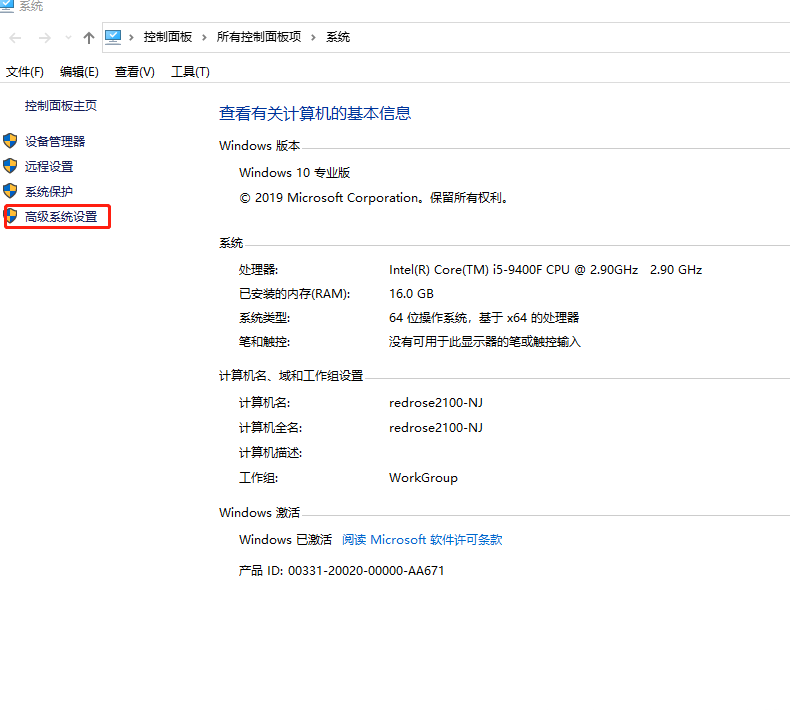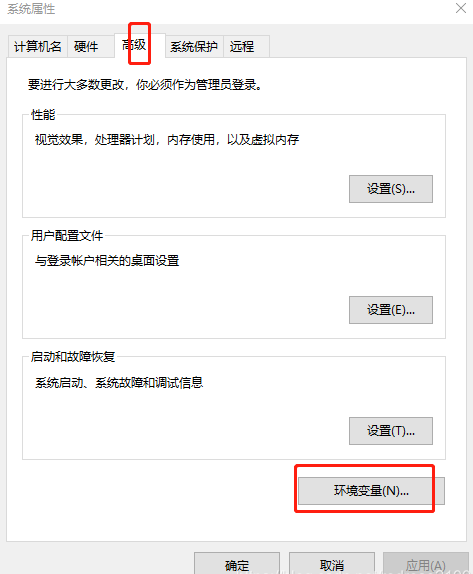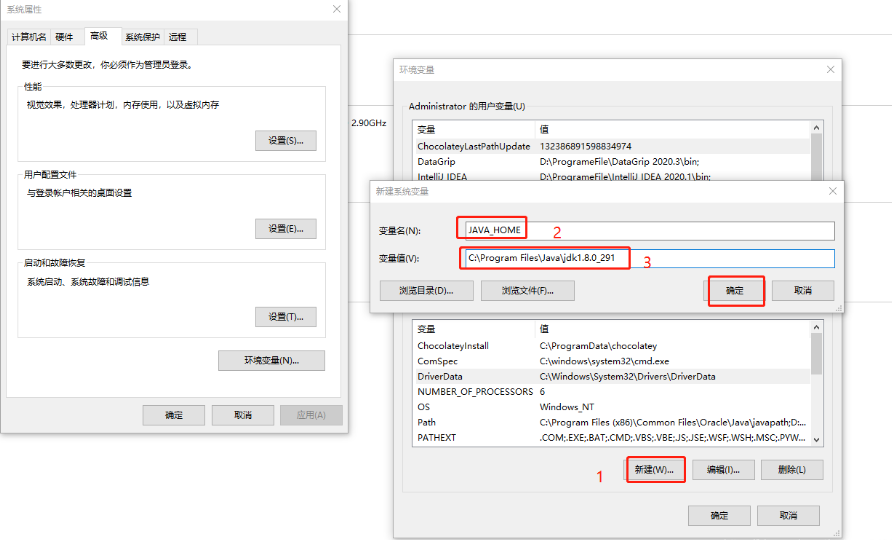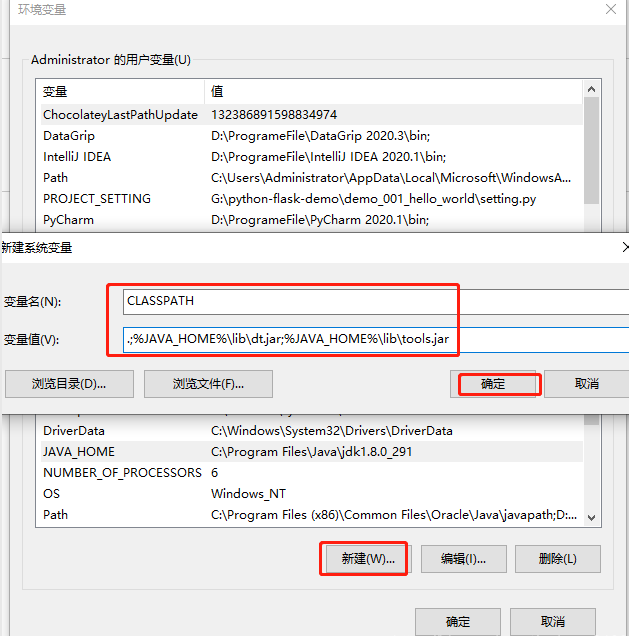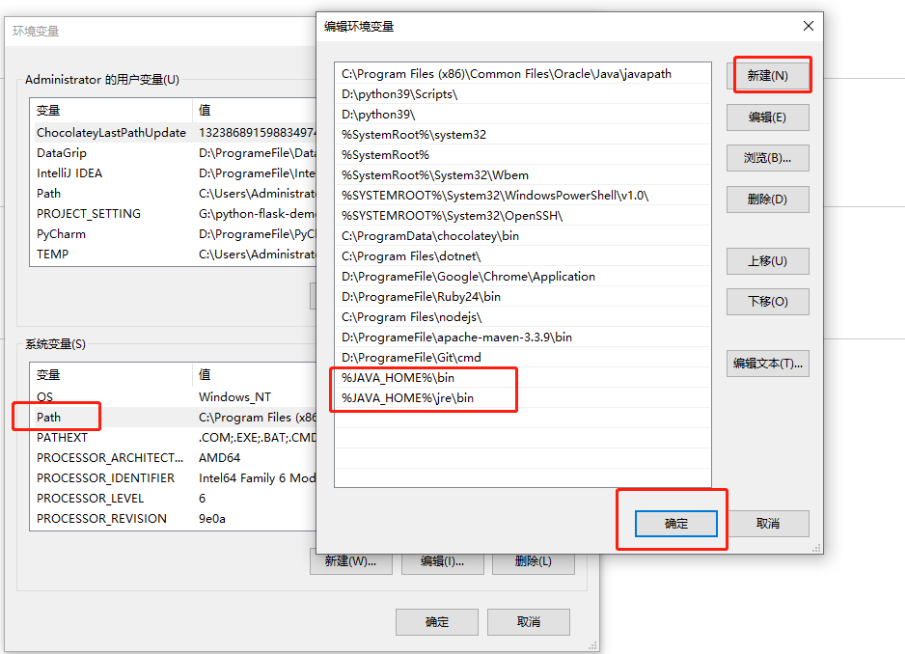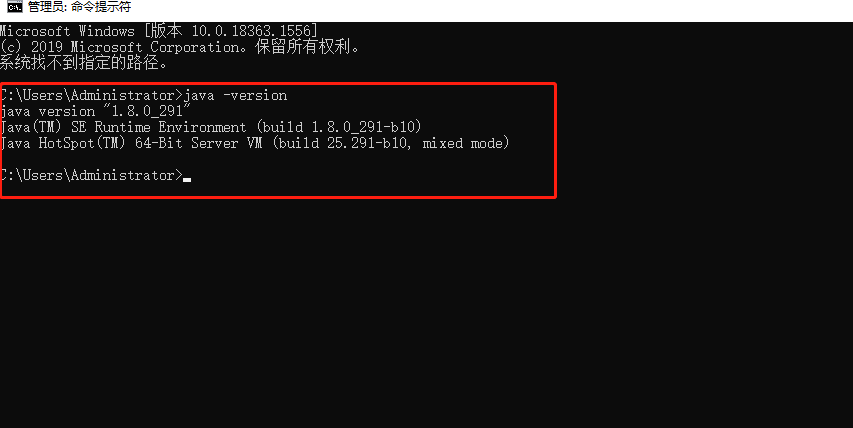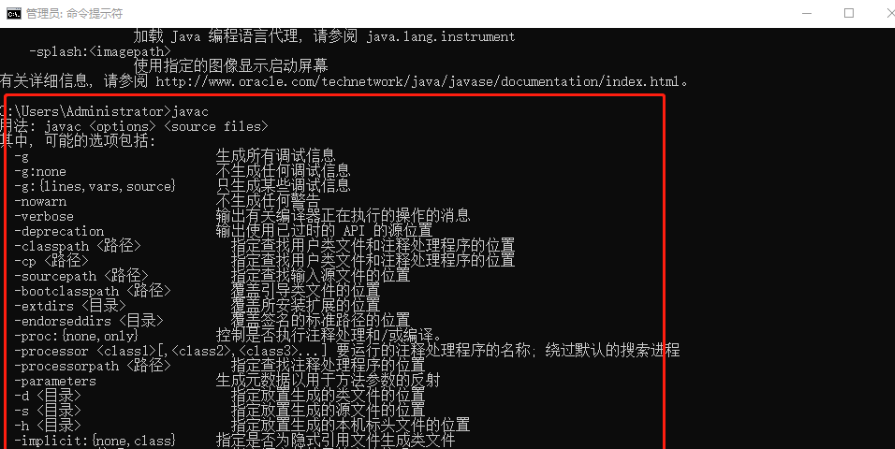查看原文
一、基于 Windows 10 系统 安装配置 JDK8
(1)打开 JDK下载网站,根据系统配置选择版本,这里选择windows 64位的版本,点击下载(这里需要注册Oracle用户,并登录才可以下载)
(2)下载完成后,【右键】-【以管理员权限运行】,然后点击【下一步】
(3)继续点击【下一步】
(4)继续点击【下一步】
(5)点击【关闭】完成安装
(6)找到安装java的位置,复制路径,比如这里 C:\Program Files\Java\jdk1.8.0_291
(7)在桌面找到【此电脑】-【右键】-【属性】,然后点击【高级系统设置】
(8)点击【高级】-【环境变量】
(9)点击【新建】,然后设置JAVA_HOME环境变量,变量值为步骤6中找到的jdk的安装路径,然后点击确定
(10)继续新建CLASSPATH变量,其值为 .;%JAVA_HOME%\lib\dt.jar;%JAVA_HOME%\lib\tools.jar ,注意起止位置有一个点和分号
(11)找到Path变量,双击打开,然后点击【新建】,新建如下两个值%JAVA_HOME%\bin 和 %JAVA_HOME%\jre\bin
(12)关闭cmd窗口,重新打开cmd窗口,执行 java -version,如下表示java已经安装成功了
(13)在cmd中继续执行javac,如下表示jdk环境变量已经完全配置OK了
二、基于 CentOS7 系统安装配置 JDK8
(1)下载jdk安装包
打开 jdk下载地址,找到linux下64位的安装包,点击下载(注意此步骤需要注册Oracle账号并登录
(2)、将安装包上传至服务器,然后解压
tar -zxvf jdk-8u331-linux-x64.tar.gz
(3)将解压文件夹移动至 /usr/local/目录下
mv jdk1.8.0_331 /usr/local/
(4)、配置环境变量
vi /etc/profile
在文件末尾增加以下内容
export JAVA_HOME=/usr/local/jdk1.8.0_331
export PATH=$JAVA_HOME/bin:$PATH
export CLASSPATH=.:$JAVA_HOME/lib/dt.jar:$JAVA_HOME/lib
(5)、使环境变量生效
source /etc/profile
(6)查看java版本号
[root@iZbp1flzt6x7pxmxfhmxeeZ pkg]# java -version
java version "1.8.0_331"
Java(TM) SE Runtime Environment (build 1.8.0_331-b09)
Java HotSpot(TM) 64-Bit Server VM (build 25.331-b09, mixed mode)
[root@iZbp1flzt6x7pxmxfhmxeeZ pkg]#
(7)执行javac,如下表示环境配置已经配置OK
[root@iZbp1flzt6x7pxmxfhmxeeZ pkg]# javac
Usage: javac <options> <source files>
where possible options include:
-g Generate all debugging info
-g:none Generate no debugging info
-g:{
lines,vars,source} Generate only some debugging info
-nowarn Generate no warnings
-verbose Output messages about what the compiler is doing
-deprecation Output source locations where deprecated APIs are used
-classpath <path> Specify where to find user class files and annotation processors
-cp <path> Specify where to find user class files and annotation processors
-sourcepath <path> Specify where to find input source files
-bootclasspath <path> Override location of bootstrap class files
-extdirs <dirs> Override location of installed extensions
-endorseddirs <dirs> Override location of endorsed standards path
-proc:{
none,only} Control whether annotation processing and/or compilation is done.
-processor <class1>[,<class2>,<class3>...] Names of the annotation processors to run; bypasses default discovery process
-processorpath <path> Specify where to find annotation processors
-parameters Generate metadata for reflection on method parameters
-d <directory> Specify where to place generated class files
-s <directory> Specify where to place generated source files
-h <directory> Specify where to place generated native header files
-implicit:{
none,class} Specify whether or not to generate class files for implicitly referenced files
-encoding <encoding> Specify character encoding used by source files
-source <release> Provide source compatibility with specified release
-target <release> Generate class files for specific VM version
-profile <profile> Check that API used is available in the specified profile
-version Version information
-help Print a synopsis of standard options
-Akey[=value] Options to pass to annotation processors
-X Print a synopsis of nonstandard options
-J<flag> Pass <flag> directly to the runtime system
-Werror Terminate compilation if warnings occur
@<filename> Read options and filenames from file
[root@iZbp1flzt6x7pxmxfhmxeeZ pkg]#
今天的文章java入门安装_java零基础自学容易吗分享到此就结束了,感谢您的阅读。
版权声明:本文内容由互联网用户自发贡献,该文观点仅代表作者本人。本站仅提供信息存储空间服务,不拥有所有权,不承担相关法律责任。如发现本站有涉嫌侵权/违法违规的内容, 请发送邮件至 举报,一经查实,本站将立刻删除。
如需转载请保留出处:https://bianchenghao.cn/81573.html

